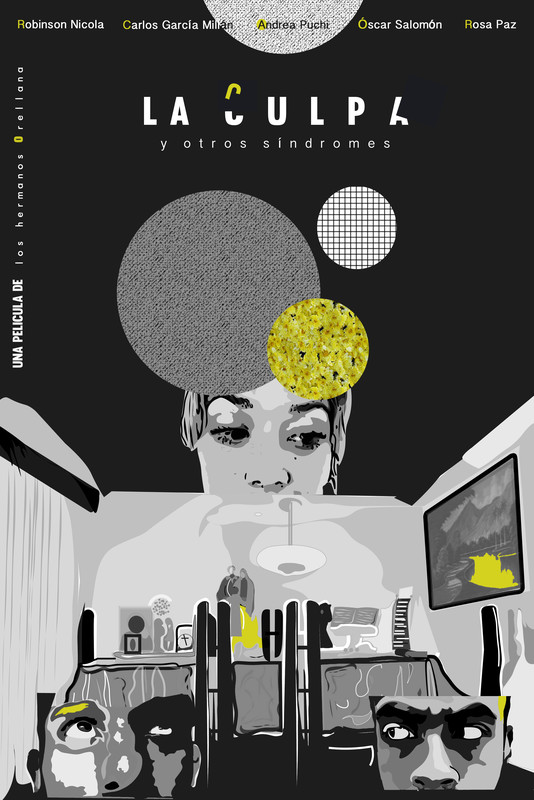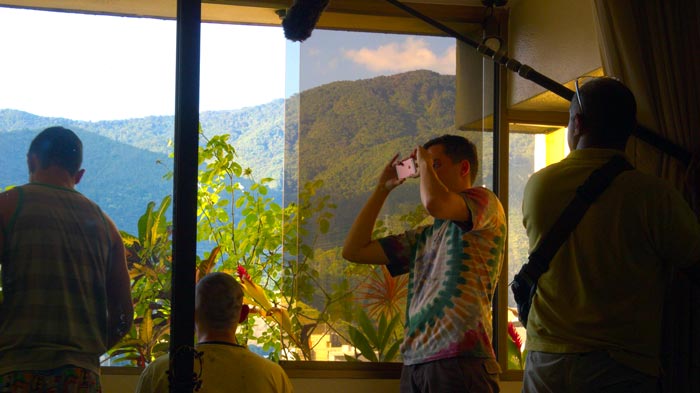Shocking Brilliance From Venezuela, Shot On iPhone SE
The Guilt Syndrome will be screen at Kosmos, Zürich on April 4th.
Directed by 2 young Venezuelan filmmakers, brothers Juan Carlos Orellana and Juan Pablo Orellana, The Guilt Syndrome is a masterful piece of drama. The film is about Raúl (who has Tourette syndrome) and his family, who struggle to cope with the young man’s condition. The film is raw and real, and you’ll be excused for feeling uncertain if what you are watching is documentary or fiction.
The performances are fantastic, while the pacing of the unfolding “day in the life” feels like a more subtle version of something by Lars von Trier; this film isn’t trying to deliberately shock or upset us, like von Trier’s stuff. Which is perhaps ironic considering the subject.
We asked them to tell us more about the film…
What is the story behind your film?
Well, I usually end up thinking about the “behind the scenes” way more than the film itself.
It was directed by myself and my brother (we call ourselves the Orellana Brothers) our best friend came up to us with an interesting story after we agreed to look for ideas for a film. Around that time we usually hang out a lot with some friends I met in a theatre class – our best friend included – we couldn’t be in the streets or outside our parents apartment that much because Caracas is one of the most dangerous cities in the world, so we fantasised about all kinds of stories we wanted to make together. Watching all kinds of films and even shooting some absurd stories on our phones.
After we heard this story about two brothers, one with Tourette’s syndrome whom this friend was set to star and interpret in a feature film, I laughed at the ridiculous idea. But my brother said something like “What about a short film?” and I laughed way harder in excitement.
One of those theatre friends was leaving the country, as so many of our other friends and family members had done in all this years, so there was this sentiment of “now or never” that gave a big sense of urgency to the film. We fixed a meeting some days later in the theatre’s café, arriving soaking wet because the rain was so intense that day and finding the three young actors of the short film waiting for us at a table.
That best friend turned protagonist, lend us some papers with drawings that look like the creation of a 4th grader. They illustrated the core of the story in a very silly way but it definitely had a heart, so we started working to turn this into a reality.
What were the steps which led you to make it?
After financing our previous project with all the money we earned working as film critics online, and buying ourselves some phones with the money that was left, we really didn’t have much of a financial plan. Robinson – this very mentioned best friend – offered to work as a butcher to try to have at least something, but the minimum wage in our country amounted to about 4 dollars monthly. It stills varies from $4 to $7.
Everyone agreed to put all the money we could get, and we started rehearsing from some character profiles my brother and I wrote. The two other older and more experienced actors agreed to participate charging us $10 for the entire work, a total symbolic amount they say as long as the film is good and passionate.
So after eight or so rehearsals around two months, were everyone improvised their lines and got directions secretly and separately from the other actors, we were all eager to start filming.
Meanwhile we knew exactly which style we were going to use for the story: Dogme 95. Going as far as to stamping Lars Von Trier face in a T-shirt (mine has Michael Haneke) we loved everything Festen and Idioterne had meant for ourselves and film history.
Finally our parents agreed to pay for the sound technicians and there our biggest problem turn opportunity started “What camera should we use?”
Why did you choose a smartphone to film with?
Our D/P abandoned us three days before shooting, he promised some DSLR for free, then asked us a few hundred for renting, and finally walked away when we suggested using the two identical iPhones each one of us had in our pockets.
All the rehearsals were shot on these phones because we wanted to accustom the actors to the filming dynamic right from the beginning.
We knew that this project couldn’t be filmed in a traditional way and had all the Dogme rules internalised, knowing that persons and feelings were way more important than equipment in this case. So we made the call and started figuring out how to shoot the entire production with our smartphones – a very stressful night.
What equipment did you use?
We both each had an iPhone SE, the prior model to the iPhone 6, and enjoy taking them out of our pockets after screening the film to anyone that could be interested. Each actor wore a lavalier mic plus a shotgun microphone that a sound technician used while he danced around us during shooting. According to the Dogme rules we couldn’t and didn’t use artificial light and all the sound had to be recorded on the spot, including the diegetic music.
We tried FiLMiC Pro but for some reason the video wasn’t as fluid as we need it to be and we didn’t have time to figure out why, so we shot using the default camera app and automatic settings.
I learned to edit in our home computer using Adobe Premiere 2017, and in the middle of power blackouts that made the entire process a surreal experience. YouTube tutorials were my school and the two and a half hours of footage where more than plenty.
How much did you know about filmmaking before you made this film?
Our previous project was one of those were you invest all the little money you have and managed to be around a big crew with decent equipment. We really appreciate the fact that film is a collaborative medium, so we really mourn that a lot of technicians —if not most of them – left and can’t find any opportunities in their own country. It’s a really sad reality.
But as film directors, shooting, writing and doing all the tasks that were needed I guess that this was a really small film school. Also I guess that obsessing around movies, interviews, books and everything related to film around the Internet it’s our biggest salvation in our underdeveloped country.
What did you like/not like about filming with a phone?
The data capability was surely a difficulty, but we even had a system for preserving the information while the other phone continued shooting.
Other than that it was almost magical. We shot the entire short film in two very relaxed and emotional days, going as far as shooting two different scenes at the same time and cutting back and forth. The dinner scene which we consider the emotional core of the film was an uninterrupted 45 minute shot that we just cut in post following different beats.
We knew we just had to embrace the look not trying to be something we are not: some guys who can afford a film crew and expensive camera rigs. I guess that in a few years this style will give me the same vibe I get from those older Super 8 films, and that’s just very exciting for us.
Has making the film changed your life in any way?
It was totally unexpected and I guess those are the kind of experiences that really leave a mark on you. We’re shocked by the emotional impact the film seems to cause in the audience and the rhythm that feels very different than a 30 minute boring student project.
It appears to be something essential about these kinds of productions, something that could only be accomplished by cinema itself.
How successful was the film, personally and in gaining an audience for your work?
We really don’t know yet, and this festival has become the only thing we can brag with our friends and family. There are like a dozen film festivals that haven’t announced their official selection, but I guess eventually YouTube or Vimeo could be our viable option for gaining an audience.
Looking back on the movie, is there anything you’d have done differently?
No, not at all. The film would be something entirely different if, for example, we would have used a DSLR. I think that even the dialogue and the interaction between the characters would have changed entirely.
How important are film festivals that give these kind of films a platform for you?
We just love the fact that all the way down to Zurich someone could appreciate our work, something so personal that we hope that in some way it could also be universal.
This was a work of pure love and faith in cinema and friendship, and just being considered by a film festival like this means much more that I can put into words, it gives us hope in a country where hope is the most scarce thing.
Eager to learn more?
Join our weekly newsletter featuring inspiring stories, no-budget filmmaking tips and comprehensive equipment reviews to help you turn your film projects into reality!
Simon Horrocks
Simon Horrocks is a screenwriter & filmmaker. His debut feature THIRD CONTACT was shot on a consumer camcorder and premiered at the BFI IMAX in 2013. His shot-on-smartphones sci-fi series SILENT EYE featured on Amazon Prime. He now runs a popular Patreon page which offers online courses for beginners, customised tips and more: www.patreon.com/SilentEye




[…] con estos aparatos, el Mobile Motion Film Festival. Y es que supone una buena opción para aquellos cineastas que no cuentan con muchos recursos para para llevar a cabo sus proyectos. No como Martin […]